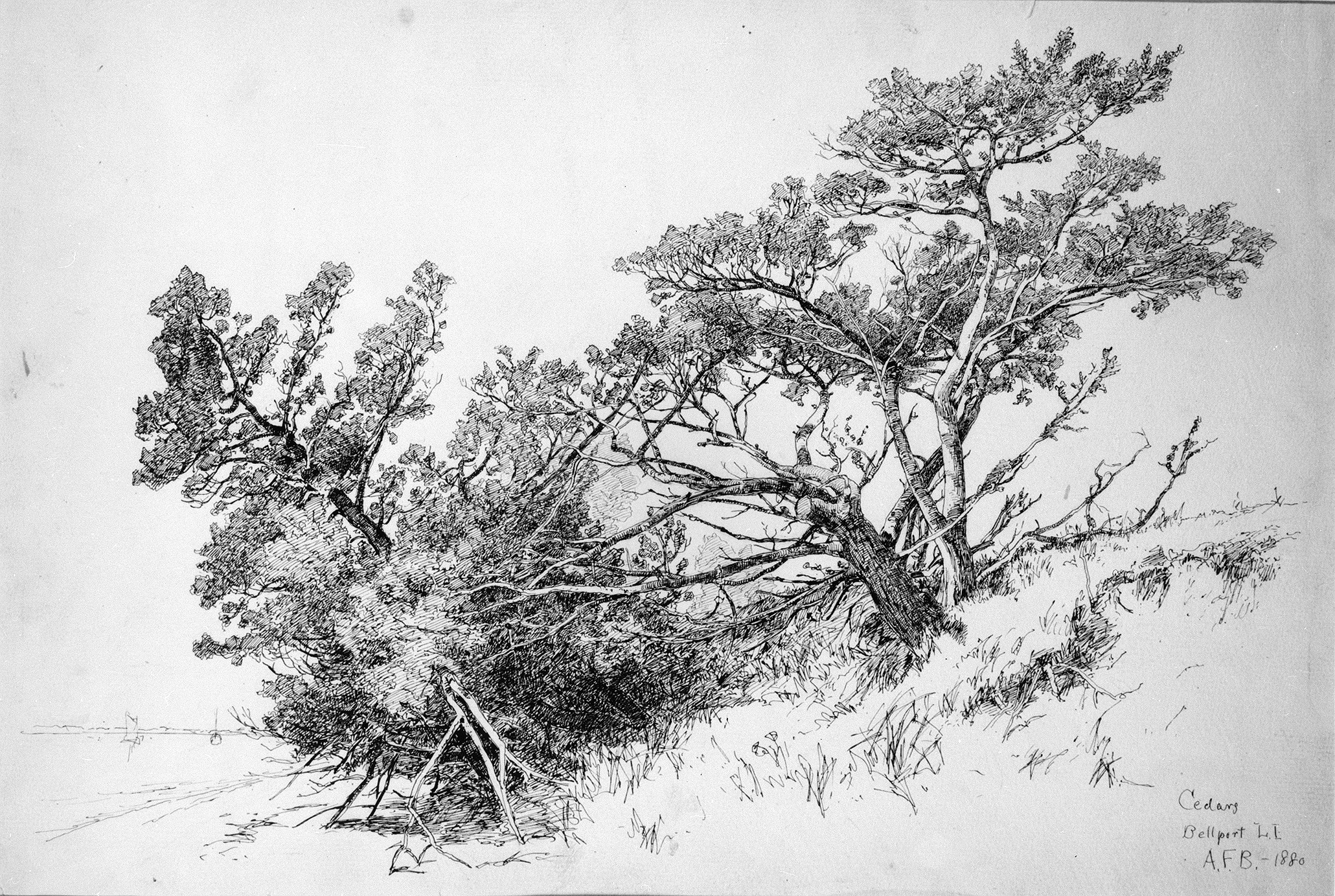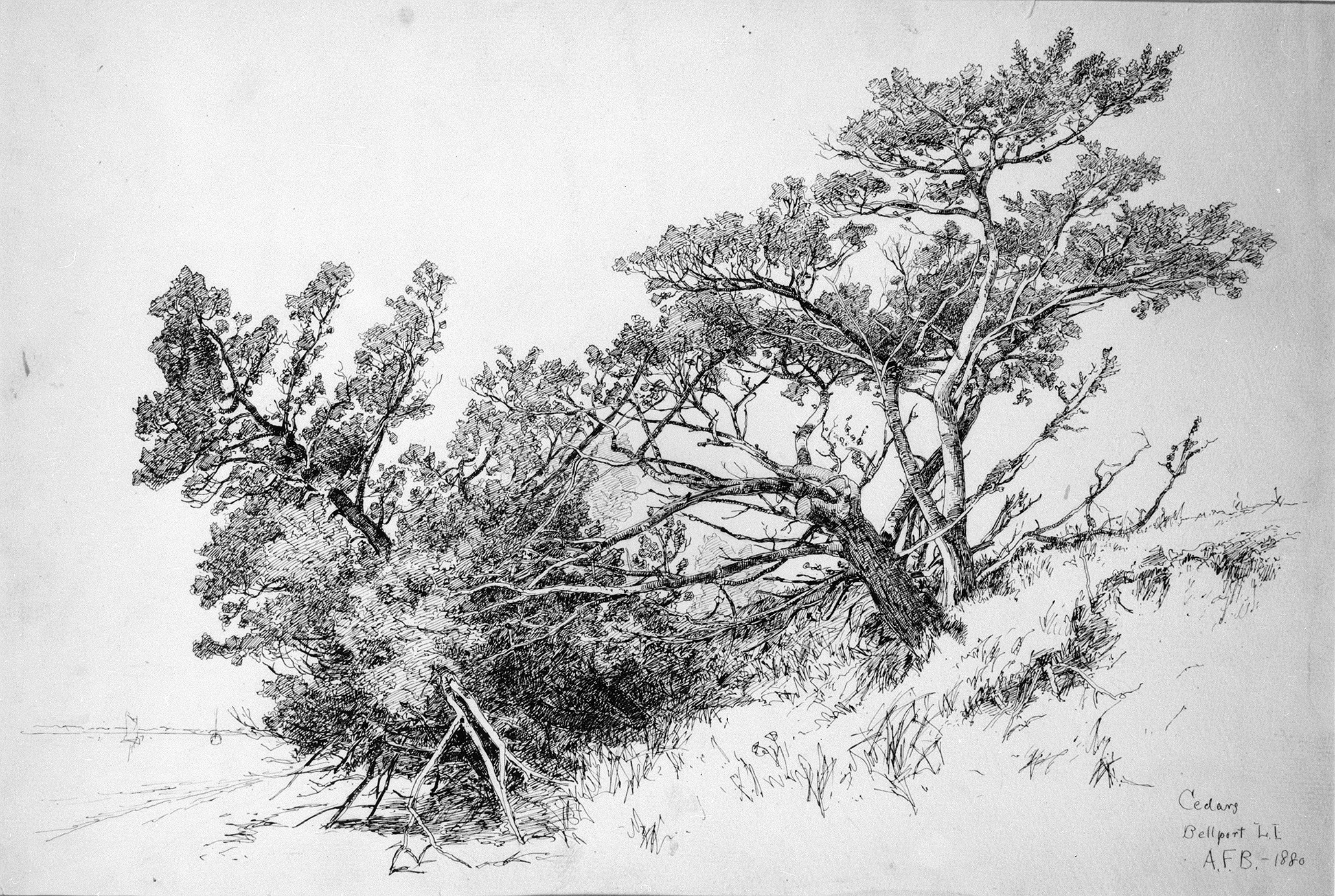Though Andrew Fisher Bunner’s finest works came from his travels throughout Europe - particularly his time in Venice - he maintained a strong interest in the subtle beauty of rural, seaside landscapes. Born and raised in New York City, his sketches of the surrounding countryside and coast were influenced by both the Hudson River School, as well as his contemporaries J.M.W. Turner and James Abbott McNeill Whistler.
Cedars presents us with, though perhaps not so obviously, Brunner’s delicate treatment of light: A stand of wind-worn evergreens clings to the side of a bluff, the individual limbs warped by time. The thickest trunk, nearest the center of the composition, worms its way in and out of the other two. Despite their intersections, whose branches belong to whom is easily discernible, as the sunlight trickling through the canopies above dapples onto them.
Hatching comprises most of the positive space, lending a deciduous quality to the cedars’ greens. This is clearly a sketch, as the marks are made hastily - evident especially in the grasses surrounding the tree trunks. They are frenzied and erratic, but from a distance appear natural, somewhat angular and sparse as beach grass would be.
Though Bunner’s keen understanding of light and shadow is certain, the sunlight glancing off the trunk on the far right seems incongruous with that hitting the one nearest the water. In the former, the bark is so bright that it is almost completely white, even “over-exposed.” But as for the latter - which appears to be facing the same direction - it is shrouded in shadow.
Could it be that Bunner intended to depict a tree with a darker bark? Or, given his predilection towards Turner and Whistler, did he employ a not-so-naturalistic approach to natural light?
- Anthony DeFeo
We need your help - we need $20,000 to create the new version of DailyArt for Android devices. Find out more here. Thank you!


 Andrew Fisher Bunner
Andrew Fisher Bunner